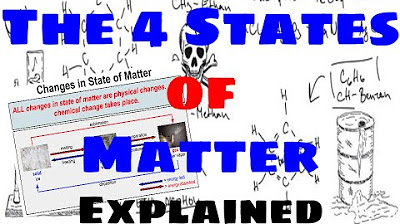APES Video Notes 6.1 - Renewable vs. Nonrenewable Energy Sources
Summary
TLDRIn this educational video, Mr. Smeads explores the differences between renewable and non-renewable energy sources. Renewable resources, like solar and wind power, can regenerate at a sustainable rate, while non-renewable resources, such as fossil fuels and nuclear power, exist in finite amounts and will eventually run out. The video highlights the importance of using resources at a rate that aligns with their natural regeneration, with overuse leading to depletion. The content emphasizes sustainability, providing examples of both renewable and non-renewable resources and their environmental impact.
Takeaways
- 😀 Renewable resources can regenerate naturally if used at or near their rate of regeneration, while non-renewable resources exist in fixed amounts and cannot be replenished.
- 🌱 Non-renewable resources, like fossil fuels (coal, oil, natural gas), take millions of years to form and are being consumed much faster than they can regenerate.
- 🔥 Depletable renewable resources, like biomass (wood), can be exhausted if overused, such as cutting down forests faster than they can regrow.
- 🌞 Non-depletable renewable resources, such as solar, wind, and hydroelectric power, cannot be exhausted by their use and will continue to exist indefinitely.
- ⚡ Nuclear power relies on finite resources, like uranium, which will eventually run out, making it a non-renewable energy source in the long term.
- 🌍 The key to renewable energy sustainability is consuming resources at a rate that is equal to or slower than their regeneration rate.
- 🌲 Deforestation rates are currently higher than reforestation rates, making forests unsustainable as a renewable resource if this pattern continues.
- ⛽ Fossil fuels, such as crude oil, petroleum, and natural gas, are expected to run out in the near future based on current consumption trends, with oil lasting about 50 years.
- 📉 The estimated lifespan of coal is around 114 years, but it, too, is finite and will be depleted based on current consumption rates.
- 🧠 The practice of explaining environmental concepts, such as whether biomass is truly a renewable resource, is a key science skill emphasized in the video.
Q & A
What is the main difference between renewable and non-renewable resources?
-Renewable resources can be naturally regenerated at a rate that meets or exceeds their usage, whereas non-renewable resources exist in fixed amounts and cannot be replenished within a human timescale.
What is a depletable renewable resource? Can you give an example?
-A depletable renewable resource is one that can run out if overused. An example is biomass, such as wood, where excessive deforestation can prevent regeneration and cause the resource to become non-renewable.
What are non-depletable renewable resources, and how do they differ from depletable renewables?
-Non-depletable renewable resources are those that cannot be exhausted, regardless of how much they are used. Examples include solar energy, wind energy, and hydroelectric power, which are not affected by consumption.
Why are fossil fuels considered non-renewable?
-Fossil fuels are considered non-renewable because they take millions of years to form and are being consumed at a much faster rate than they can regenerate.
What is the significance of the regeneration rate of renewable resources?
-The regeneration rate of renewable resources is crucial because if the resource is consumed faster than it regenerates, it can become exhausted and no longer be considered renewable.
How does deforestation impact the renewability of forests?
-Deforestation impacts the renewability of forests by reducing the rate of reforestation, causing forests to be depleted faster than they can regenerate, thus preventing them from remaining a renewable resource.
How long are fossil fuels estimated to last if we continue using them at current rates?
-If fossil fuels continue to be consumed at the current rates, crude oil is expected to last about 50 years, natural gas for around 60 years, and coal for about 114 years.
Why is biomass sometimes not considered a renewable energy source?
-Biomass is not always considered renewable because if it is used at a rate faster than the biomass (like trees or crops) can be replenished, it can lead to depletion and the resource will no longer be sustainable.
What does the graph showing deforestation and reforestation rates tell us about the sustainability of forests?
-The graph indicates that deforestation is happening faster than reforestation, meaning forests are being used unsustainably and will not remain a renewable resource if this trend continues.
What environmental process is suggested for practice at the end of the video?
-The suggested environmental process for practice is explaining whether or not biomass is a renewable energy source, justifying the answer based on its rate of use and regeneration.
Outlines

This section is available to paid users only. Please upgrade to access this part.
Upgrade NowMindmap

This section is available to paid users only. Please upgrade to access this part.
Upgrade NowKeywords

This section is available to paid users only. Please upgrade to access this part.
Upgrade NowHighlights

This section is available to paid users only. Please upgrade to access this part.
Upgrade NowTranscripts

This section is available to paid users only. Please upgrade to access this part.
Upgrade NowBrowse More Related Video

The Four States of Matter - Explained

Lab Equipment - Explained

3. Gr 11 Life Sciences - Population Ecology - Theory 3 Mark Recapture Method

4. Gr 11 Life Sciences - Population Ecology - Worksheet 1

PENJASKES KELAS X - SOFTBALL

Introduction to Culture [AP Human Geography Review Unit 3 Topic 1]

Menentukan Mr ( massa molekul relatif )
5.0 / 5 (0 votes)